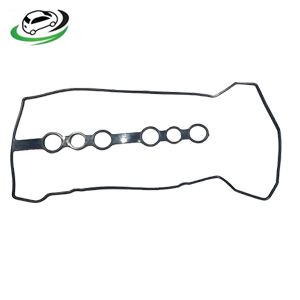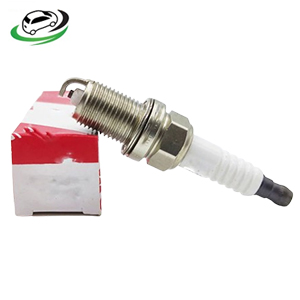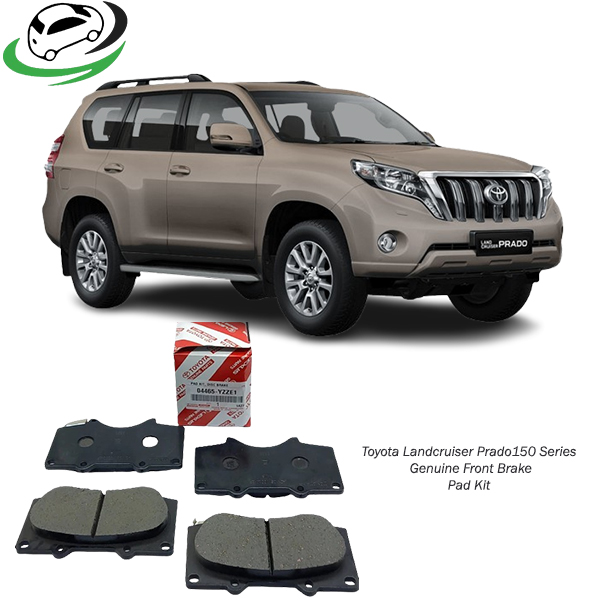-3%
Get Toyota Land Cruiser Prado 150 Series Genuine Front Brake Pad Kit 04465-YZZE1
Brake pads are an essential component of a vehicle’s braking system. They are the parts that come into direct contact with the brake rotors (discs) to create the friction needed to slow down or stop the vehicle. Understanding the function, types, common issues, and maintenance of brake pads is crucial for ensuring vehicle safety and performance.
Function
Brake pads play a critical role in the disc brake system. When the brake pedal is pressed, hydraulic fluid from the master cylinder is pushed through the brake lines to the brake calipers. The calipers then squeeze the brake pads against the rotors, generating friction that slows down the rotation of the wheels and brings the vehicle to a stop. The effectiveness of the braking process relies heavily on the condition and quality of the brake pads.
Types of Brake Pads
There are several types of brake pads, each made from different materials and offering unique advantages and disadvantages:
- Organic Brake Pads:
- Materials: Made from a mixture of fibers and materials such as glass, rubber, carbon, and Kevlar.
- Advantages: Quieter, softer on the rotors, and less expensive.
- Disadvantages: Shorter lifespan, produce more dust, and less effective in high-temperature conditions.
- Semi-Metallic Brake Pads:
- Materials: Comprise 30-65% metal by weight, including steel wool, copper, iron, and graphite.
- Advantages: Durable, excellent heat dissipation, and effective in a wide range of temperatures.
- Disadvantages: Noisier, produce more dust, and can wear down rotors faster.
- Ceramic Brake Pads:
- Materials: Made from a mixture of ceramic fibers, nonferrous metal particles, and bonding agents.
- Advantages: Quiet, produce less dust, longer lifespan, and provide stable performance across various temperatures.
- Disadvantages: More expensive and may not be suitable for extreme driving conditions like racing.
- Low-Metallic NAO Brake Pads:
- Materials: Organic materials with a small amount of metal (usually copper or steel).
- Advantages: Good braking performance and heat transfer.
- Disadvantages: Noisier and produce more dust than ceramic pads.
Common Issues and Symptoms of Worn Brake Pads
Brake pads are subject to wear and tear and need regular inspection and replacement. Common issues include:
- Squeaking or Squealing Noise: Often caused by the wear indicator, a small metal tab that makes contact with the rotor when the pad material is low.
- Grinding Noise: Indicates that the pads are completely worn out, and the backing plate is contacting the rotor.
- Reduced Braking Performance: Longer stopping distances or a soft brake pedal feel can indicate worn brake pads.
- Vibration or Pulsation: Uneven pad wear or warped rotors can cause vibrations when braking.
- Visible Pad Wear: Inspecting the brake pads through the wheel can reveal if they are thin and need replacement.
Maintenance and Replacement
Regular maintenance of brake pads is essential for vehicle safety:
- Inspection: Regularly check brake pads for thickness. Most manufacturers recommend replacing pads when they are down to 3mm to 4mm.
- Replacing Brake Pads: Follow these steps for replacement:
- Safety First: Ensure the vehicle is on a stable surface, and use appropriate lifting equipment.
- Remove the Wheel: Take off the wheel to access the brake caliper.
- Remove the Caliper: Unbolt the caliper and carefully suspend it without stressing the brake line.
- Remove the Old Pads: Take out the worn brake pads from the caliper bracket.
- Inspect Rotors: Check the rotors for wear and damage. Resurface or replace if necessary.
- Install New Pads: Place the new brake pads in the caliper bracket.
- Reassemble: Reattach the caliper and wheel, ensuring all bolts are torqued to specifications.
- Break-In Procedure: Properly breaking in new brake pads, known as bedding, ensures optimal performance and longevity. This typically involves a series of controlled stops to transfer an even layer of friction material onto the rotors.
Follow us on Facebook for more parts.



